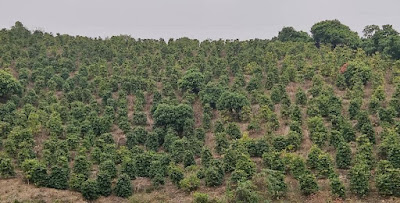Kenya's coffee production in 2022-23 is expected to fall by 10% to 700,000 bags due to higher fertilizer prices, the U.S. Department of Agriculture (USDA) said in a newly published report tracking Kenya's coffee production.
Global fertilizer prices started surging in early 2021 due to the impact of the COVID-19 pandemic. Continued fighting between Russia and Ukraine has further exacerbated the situation.
Fertilizer prices in Kenya currently stand at Sh6,000 per bag (50kg), up 71% from a year ago.
Other reasons for the price hike include producers such as China, Russia and Turkey restricting exports to protect their farmers, while India, Brazil and the United States are in high demand and buying in large quantities, reducing global supplies.
The USDA report states: “Kenya’s coffee production in 2022/23 is expected to fall by 10% to 700,000 bags due to lower yields due to reduced fertilization. Crop acreage will remain at 105,000 hectares."
Kenya's coffee exports in 2022/23 will fall from 750,000 bags to 670,000 bags due to lower production, the report said.
According to the Kenya National Bureau of Statistics (KNBS), Kenya exported coffee worth Sh26.1 billion in 2021, up from Sh22.2 billion in 2020.
According to the International Coffee Organization, Kenya is the fifth largest coffee producer in Africa, after Ethiopia, Uganda, Côte d'Ivoire and Tanzania.
According to the USDA report, domestic coffee consumption is expected to grow slightly over the period even as lower consumer purchasing power due to high inflation dampens demand growth fueled by a recovery in the hospitality industry.
"While consumption is expected to rise as Kenya's tourism and restaurant industries recover following the lifting of COVID-19 containment restrictions, domestic consumption is expected to rise as high inflation reduces consumers' purchasing power," the USDA report said. growth will be constrained.” "Coffee consumption is seen as a non-essential expense and thus sensitive to changes in purchasing power".
The Kenyan government has announced Sh5.7 billion in fertilizer subsidies to partially offset fertilizer prices.
More than 80% of coffee in Kenya is sold by cooperatives, with the remainder sold by corporate and individually owned businesses. More than 90% of Kenya's coffee is sold through the Nairobi Coffee Exchange (NCE), with the remainder sold "directly" through contracts negotiated by marketing agents representing producers and exporters.










